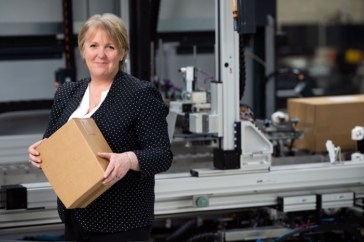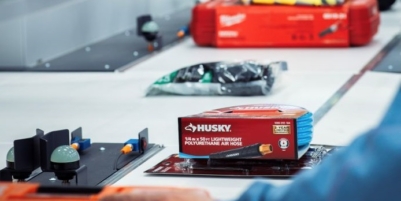-
BLACKOUT TECHNOLOGIES TARGETS TELEMATICS-INTEGRATED MOBILE DEVICE BLOCKING TO COMBAT SMARTPHONE DISTRACTION - April 1, 2025
-
OpenADR Alliance announces first OpenADR 3.0 certified products with EVoke Systems, E.ON Energy and Universal Devices - March 25, 2025
-
Growing fulfilment and contract packer appoints new Managing Director - March 25, 2025
-
When is it time to invest in a WMS? Understanding the key trigger points - March 25, 2025
-
eCapital helps Vantage Recruitment on its journey to financial success - March 24, 2025
-
Hugo Beck Celebrates 70 Years of Packaging Innovation with Open House Events - March 20, 2025
-
PROLOG FULFILMENT SUPPORTS LUNA DAILY’S COMMITMENT TO BETTER BODY CARE FOR ALL WOMEN - March 19, 2025
-
Motion Ventures launches largest-ever maritime tech fund at $100M to meet the industry’s new pace of adoption - March 18, 2025
-
ITD GLOBAL APPOINTS GROUP CHIEF REVENUE OFFICER - March 17, 2025
-
SURECAM TEAMS UP WITH ENTERPRISE FLEX-E-RENT FOR VEHICLE REPAIR & MAINTENANCE CONFERENCE - March 14, 2025
Tighter EU Regulations for ecommerce packaging are on the way, with implications for UK businesses. What are the options? By Jo Bradley, Business Development Manager at Sparck Technologies
Despite somewhat depressed Christmas trading, parcels shippers and couriers have been under huge stress this season. Severe weather and industrial action at Royal Mail have added to the perennial problem of driver and warehouse operative shortages, and the pressure isn’t over yet – with so many delayed Christmas deliveries, the rate of returns in January is said to be up by 25%.
So, every available delivery vehicle has been loaded to capacity. But loaded with what, exactly? Quite possibly, mostly fresh air. The scandal of goods being shipped in vastly oversized boxes, with all the waste both of materials and transport capacity that this entails, shows no signs of abating.
However, change may be imminent – the European Commission has a plan.
At the end of November the Commission published a draft Regulation on packaging and packaging waste. This includes a wide range of proposals covering packaging design, materials, re-use and recycling, but importantly, it also includes Article 9, headed ‘packaging minimisation’. This requires that ‘Packaging shall be designed so that its weight and volume is reduced to the minimum necessary’.
It goes on, ‘Empty space shall be reduced to the minimum necessary… for grouped and transport packaging, including e-commerce packaging, in relation to the total volume of the grouped or transported products and their sales packaging… and space filled by paper cuttings, air cushions, bubble wraps, sponge fillers, foam fillers, wood wool, polystyrene, Styrofoam chips or other filling materials shall be considered as empty space’.
Businesses will have to ensure that the empty space ratio is a maximum of 40% – and if the sales packaging is the ecommerce packaging, the same rules apply. This has major implications for the ecommerce sector where lax practices on the use of wasteful, oversized boxes is commonplace.
But surely this is solely a problem for businesses operating in the EU?
It’s worth noting that, whilst this is a proposed EU Regulation, it will of course apply to any UK distributor selling to customers in the Union and it’s highly likely that the UK will follow suit. The target date for implementation may be 2030, but the issue can, and should, be addressed right now. There are plenty of sound reasons for doing so, with many retail businesses stepping up to lead the way.
Users of Sparck Technologies’ automated packing lines are already ahead of the game. Using scanning technology, our CVP systems can cut, erect, fill, seal and label a ‘right size’ box for any group of items presented, ensuring a snug fit without the use of any void fillers. Users are meeting the Commission’s objectives by minimising the use of cardboard, eliminating void fill – many forms of which are hard or impossible to recycle – and maximising the utilisation of vehicle capacity, which in turn decreases the environmental impact per tonne-mile.
The net result is a slashing of material and transport costs, a reduction of in-transit damage, along with a much-improved customer experience, while replacing up to twenty manual packing desks with just one or two machine operators, with a throughput of up to 1,100 packages per hour.
So, while we thoroughly support the Commission’s aims, we really don’t see why companies should be waiting until 2030. They can get ahead of the curve, right now, saving the planet and their bottom line. 2023 should be the year of the right-sized package.
More information on Sparck Technologies’ right-size ecommerce packaging systems at https://sparcktechnologies.com

































